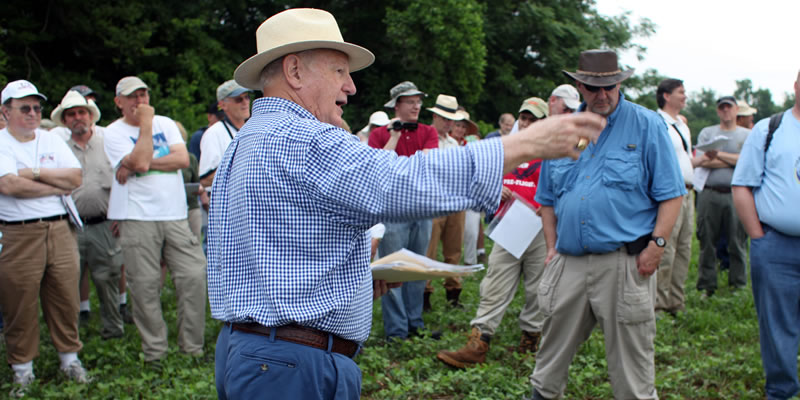This past Saturday (June 8), my buddy Brian and I had the privilege of attending a tour of the Brandy Station battlefield to commemorate the 150th anniversary of the battle.
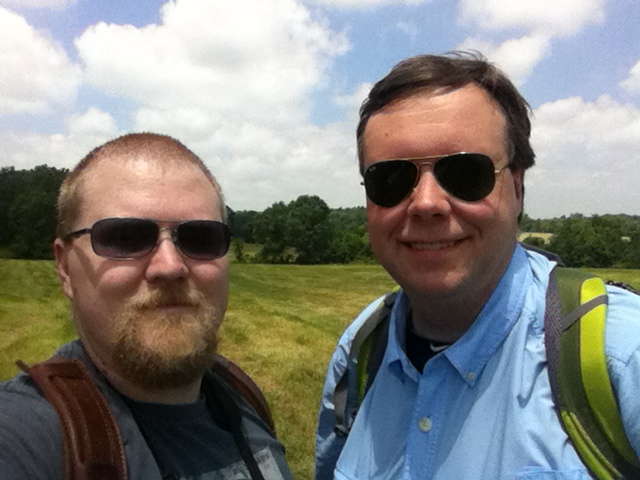
The Loudoun County Civil War Roundtable set up the whole thing and had Bud Hall on hand to lead the tour group of over a 200 people. Along with Bud was Eric J. Wittenberg, providing biographical sketches of cavalry commanders and general color commentary throughout the day. Finally, the third major player, often in the background though, was Craig Swain, who, along with other volunteers, handled the logistics of moving people around.
Below, Craig kicks things off at 8:30 AM with the basic guidelines for the day. The day started out overcast.
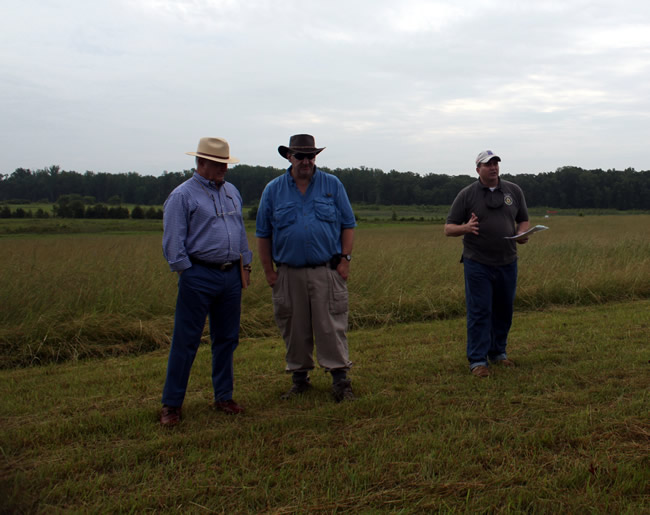
The first stop was just north of the Culpeper Regional Airport, which unfortunately rests on top of a portion of the battlefield.
Hall started the tour by emphasizing that he would cover three major topics: Strategy, tactics, and preservation. Strategy and tactics are typical for battlefield tours, but Hall had a slew of war stories from the past 30 years of how he and others toiled to save portions of the Brandy Station battlefield from development.
For those of you that have not had the opportunity to see Hall in action, think of Patton-like figure who is aggressively passionate about history and ensuring you stand at or near where events occurred. His philosophy on the sacredness of battlefields borders on religious fanaticism. Most of all, his enthusiasm is infectious, which is one of the best traits of a tour guide. Early in the morning, he described how men that died in the battle were buried where they fell, but never dug up.
We were all walking on “one, grand hallowed cemetery.”
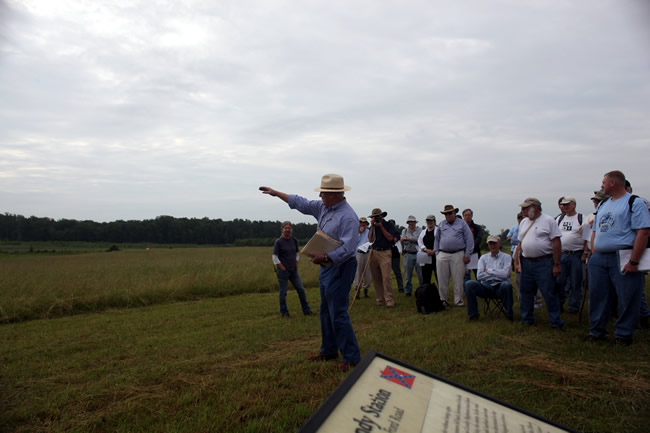
We moved onto Buford’s Knoll, arriving at about 9:30 AM.
There, Wittenberg provided several biographical sketches of cavalry commanders. JEB Stuart pays close attention.
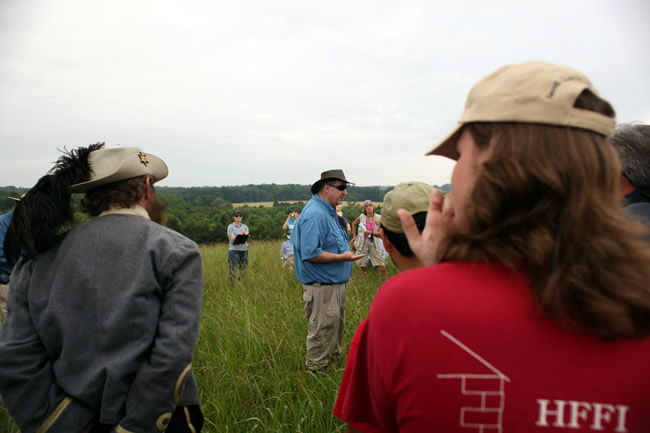
Hall provided details of John Buford’s command, as well as anecdotes of saving the ground from office buildings and a Formula One Racetrack. Hall would emphasize later that day that “some things are worth fighting for. Hallowed ground is worth fighting for. Where men fought and died is worth fighting for.”
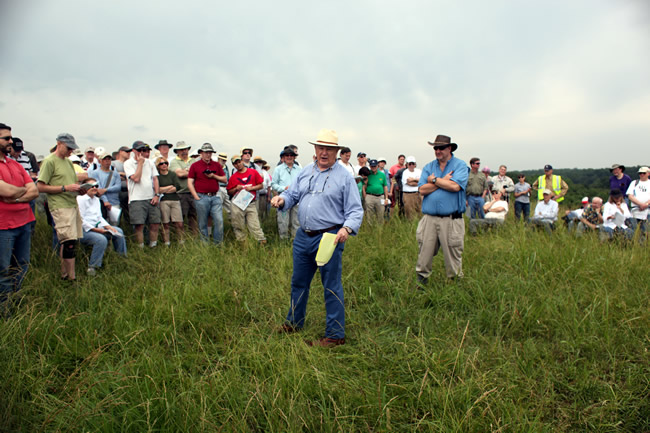
From this point, Buford commanded his men while they fought for over a stone wall.
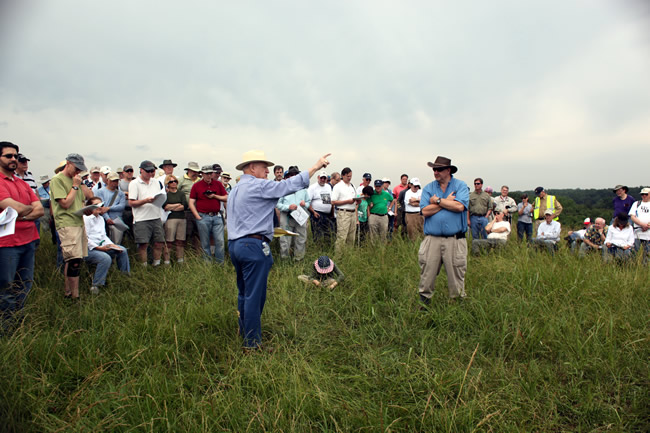
The following provides a view of the tree line that marks where the stone wall resided in 1863. There, Federals and Confederates fought over this crucial piece of the battlefield.

From Buford’s Knoll, we trekked to the Cunningham slave quarters.
Estimates of those in attendance varied, but I heard anywhere from 150 to 200.

Coach Swain was directing traffic throughout the day. Here he is explaining the double flea-flicker play that ultimately won the Rose Bowl.

At 10:30 AM, we arrived at the spot of the slave quarters. Hall told us what we know of the grounds including the fact that it needs some archaeological attention.
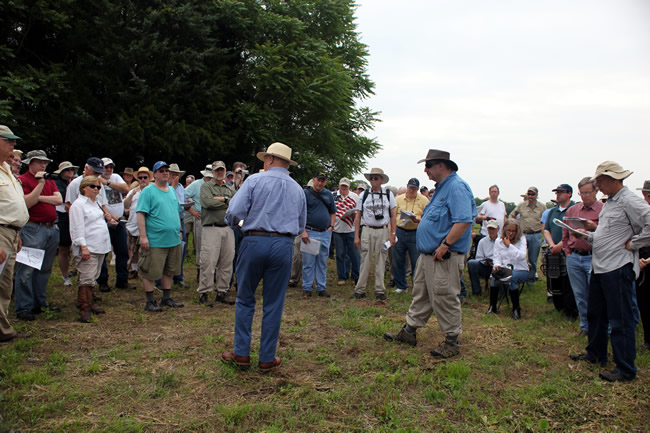
From there, we trekked toward a farm where we could see Beverly’s Ford, arriving at about 10:45 AM.
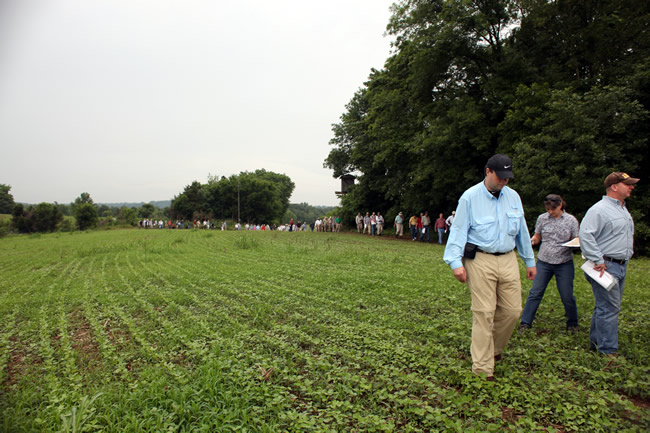
Here is where Hall revealed that the first action of the Gettysburg Campaign began.
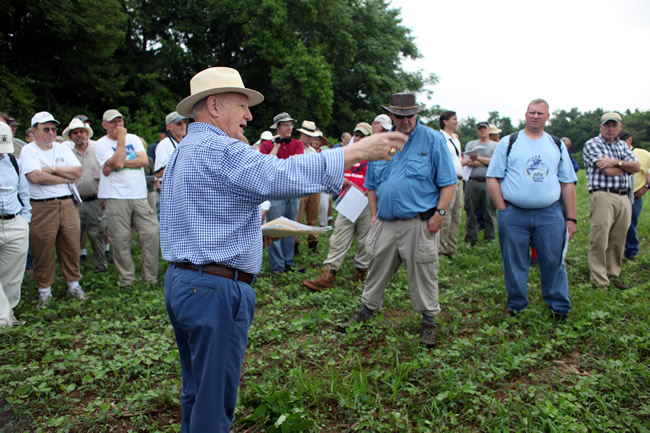
Off in the distance, is the Rappahannock River where Buford’s men crossed around 4:00 AM.
Afterward, he headed to Rooney Lee’s Knoll, arriving at about 11:45 AM.
Here, Rooney Lee commanded troops and fought for another stone wall in the distance, now marked by a tree line. Wittenberg and Hall took questions after each stop.
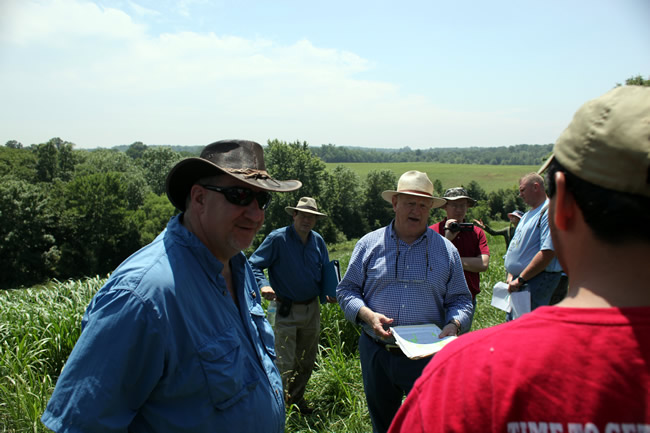
Here is a panoramic view from Rooney Lee’s Knoll facing another tree line that marks the stone wall. Hall was especially excited to lead the tour group here, as he had never had the opportunity to do so until that day.

By 1:00 PM, we were at the location of St. James Church.
Here, Hall, Wittenberg, and Swain described cavalry actions.
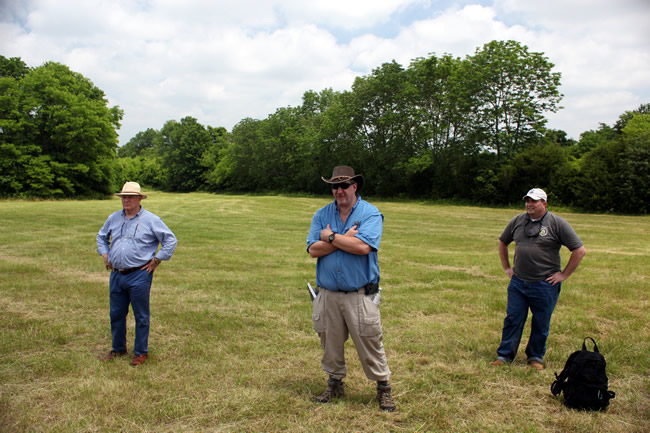
Tom Kern and the Valley Light Horse were available to demonstrate cavalry charges, dismounted skirmishing, and other tactics.

They provided a super backdrop for the tour.
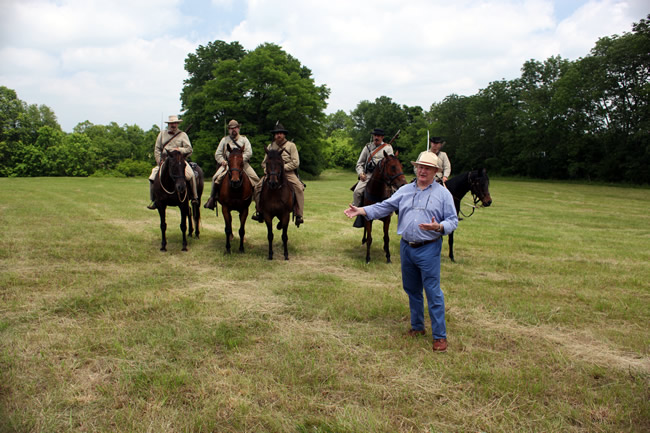
Along with biographical sketches, Wittenberg described some of the heated cavalry action on this field.
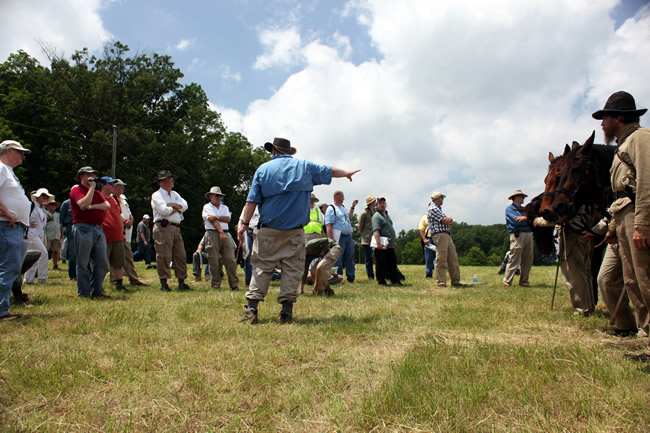
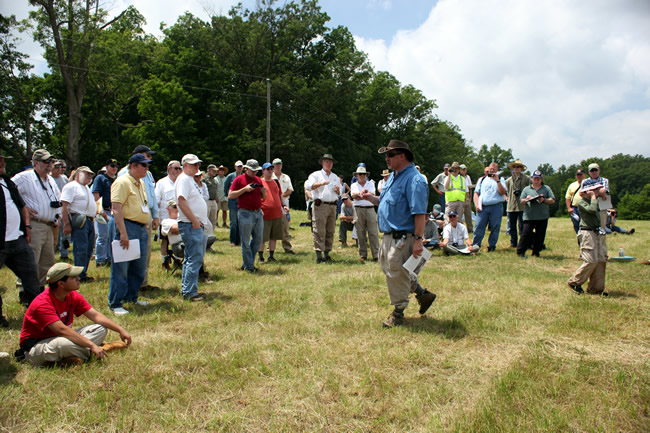
By 2:00 PM, were east of Fleetwood Hill.
Hall brought along Tersh Boasberg, a lawyer who told some more war stories of fighting to preserve the battlefield. It was here that Hall revealed that this was his “last tour of duty.” It is difficult to imagine after watching such an energetic, passionate man put on such a superb tour.
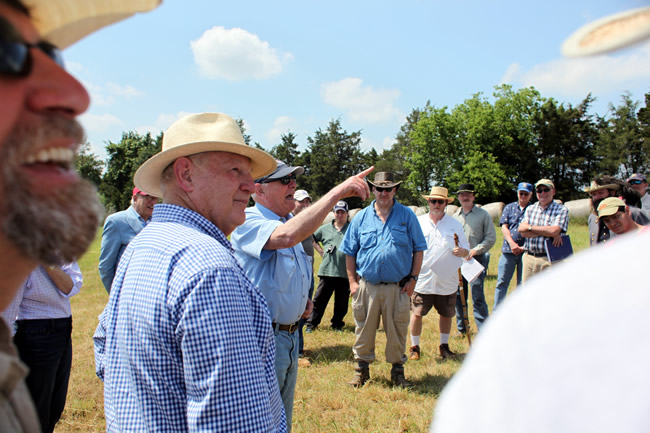
Here is panoramic shot with Fleetwood Hill in the distance. During Brandy Station, this hill acted as JEB Stuart’s headquarters and was hotly contested during the battle. However, Hall emphatically made the claim that the hill was “the most fought over, camped upon and marched over real estate in the entire United States.” He proved his case by listing more than a half dozen generals who used the hill for headquarters throughout the war.

A closer view reveals the house atop Fleetwood Hill. The Civil War Preservation Trust is working to raise enough funds to buy the hill. They are short about $90,000 to close the deal and they are accepting donations. Hall also revealed his dream to see the Brandy Station battlefield become a state and eventually national park, which would be the first dedicated to cavalry.
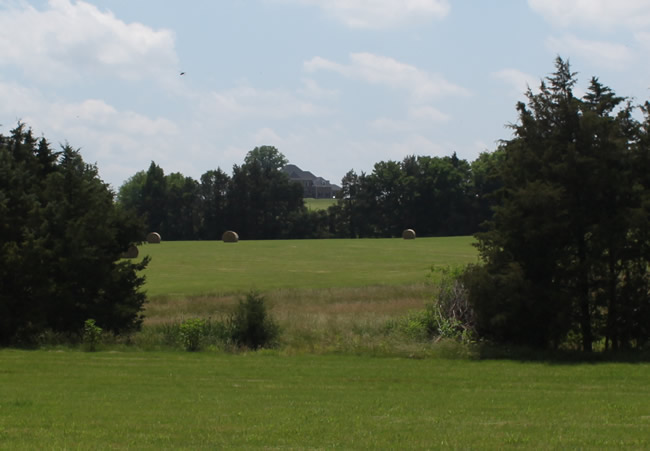
We closed the day out at Rose Hill where the Loudoun County Civil War Roundtable graciously provided refreshments.
It is difficult to keep from overpraising the work these folks did to put on such a superb tour of Brandy Station. The logistics of planning where to put more than 100 people with cars throughout the day must have been painful, but you would not have known it. Hall, Wittenberg, and Craig remained energetic throughout the day, and the transitions from spot to spot were fairly smooth. This is an experience I will always remember.
If you enjoyed this post, please consider donating a few bucks to the Civil War Preservation Trust to help buy Fleetwood Hill.
Other Reports on the Day
I was not the only one with a camera that day. The following reports provide more detail and commentary, from different perspectives.
- Craig Swain
- Eric J. Wittenberg provides commentary on the tour, as well as a peak into some of the politics behind preservation.
- Clint Schemmer’s article for the Fredericksburg Free Lance Star

